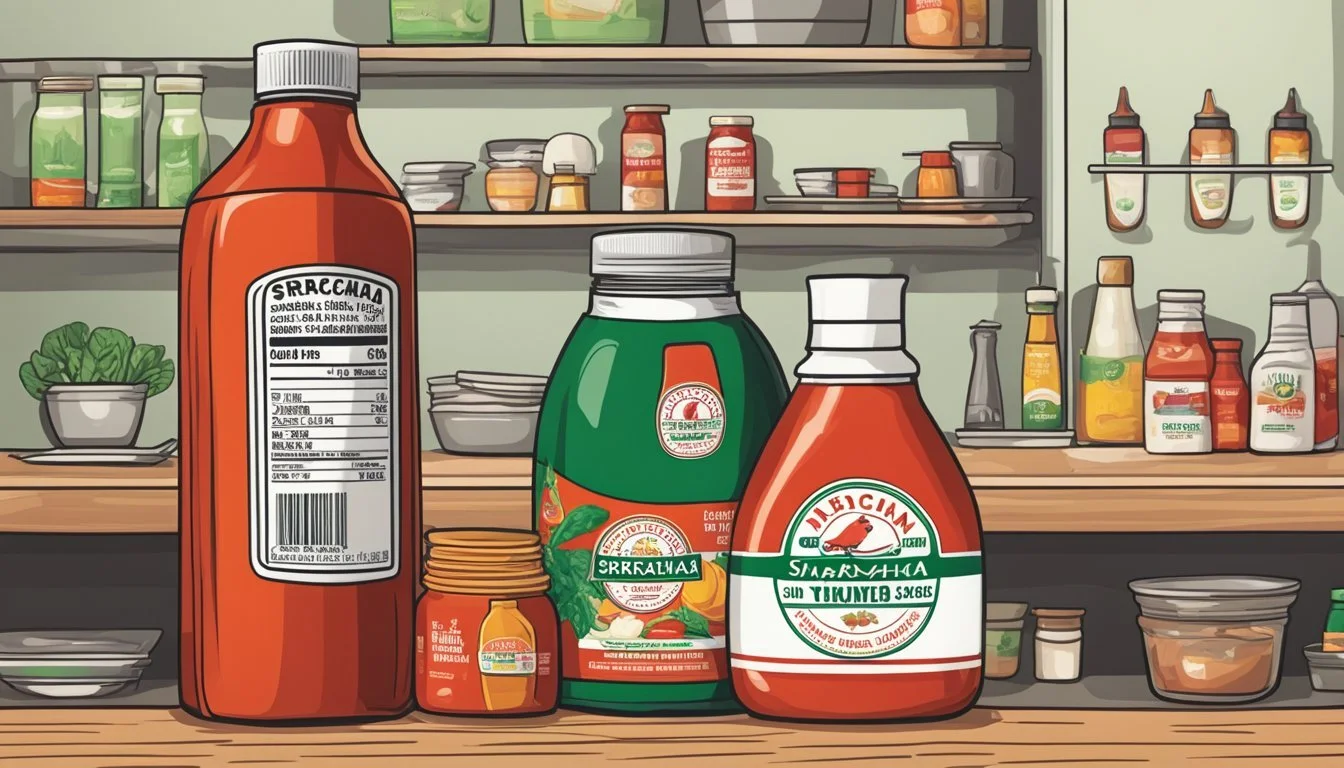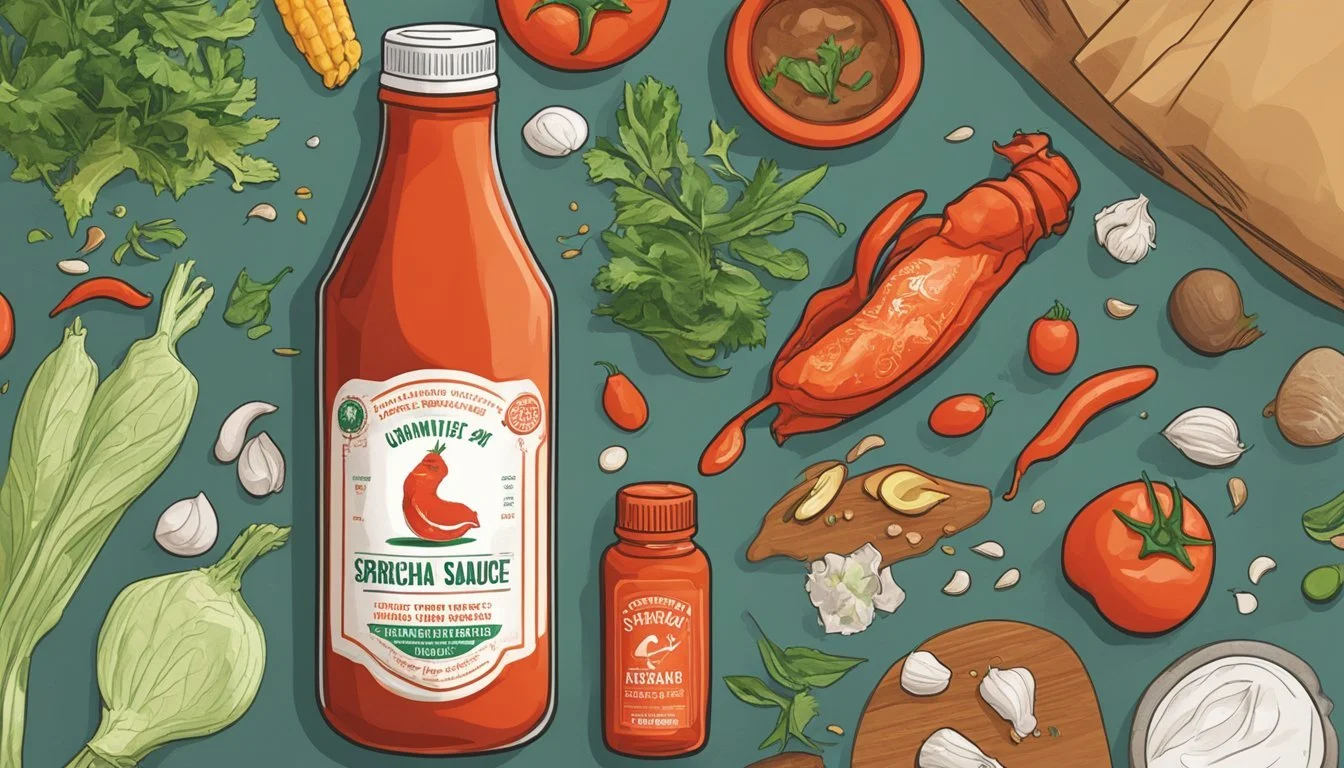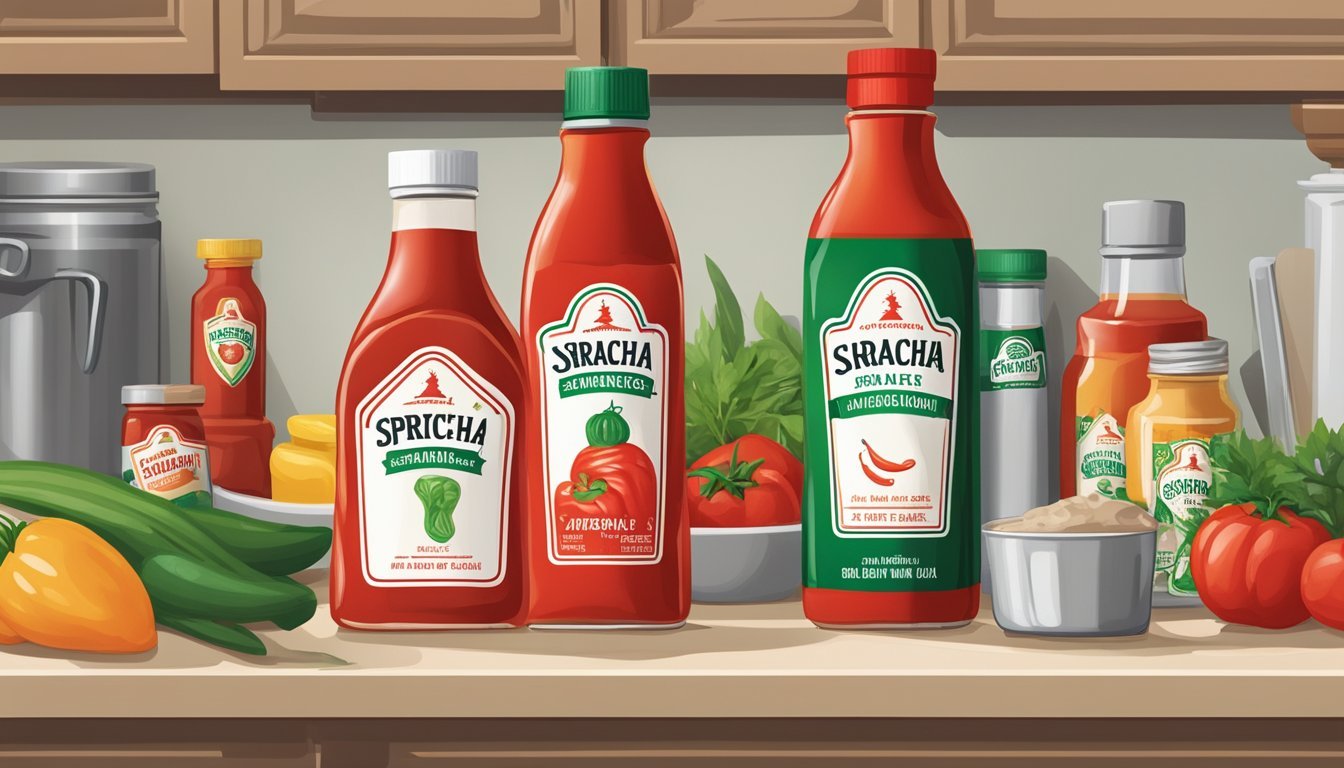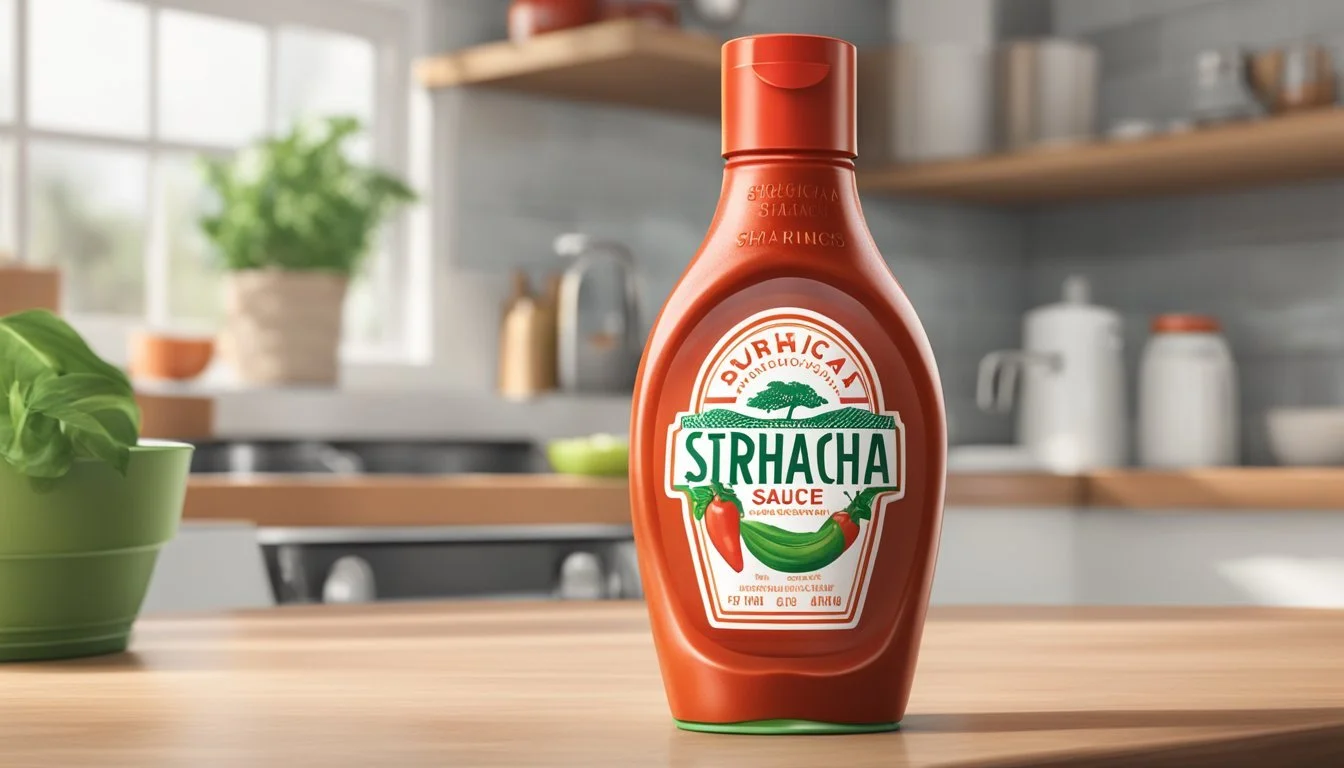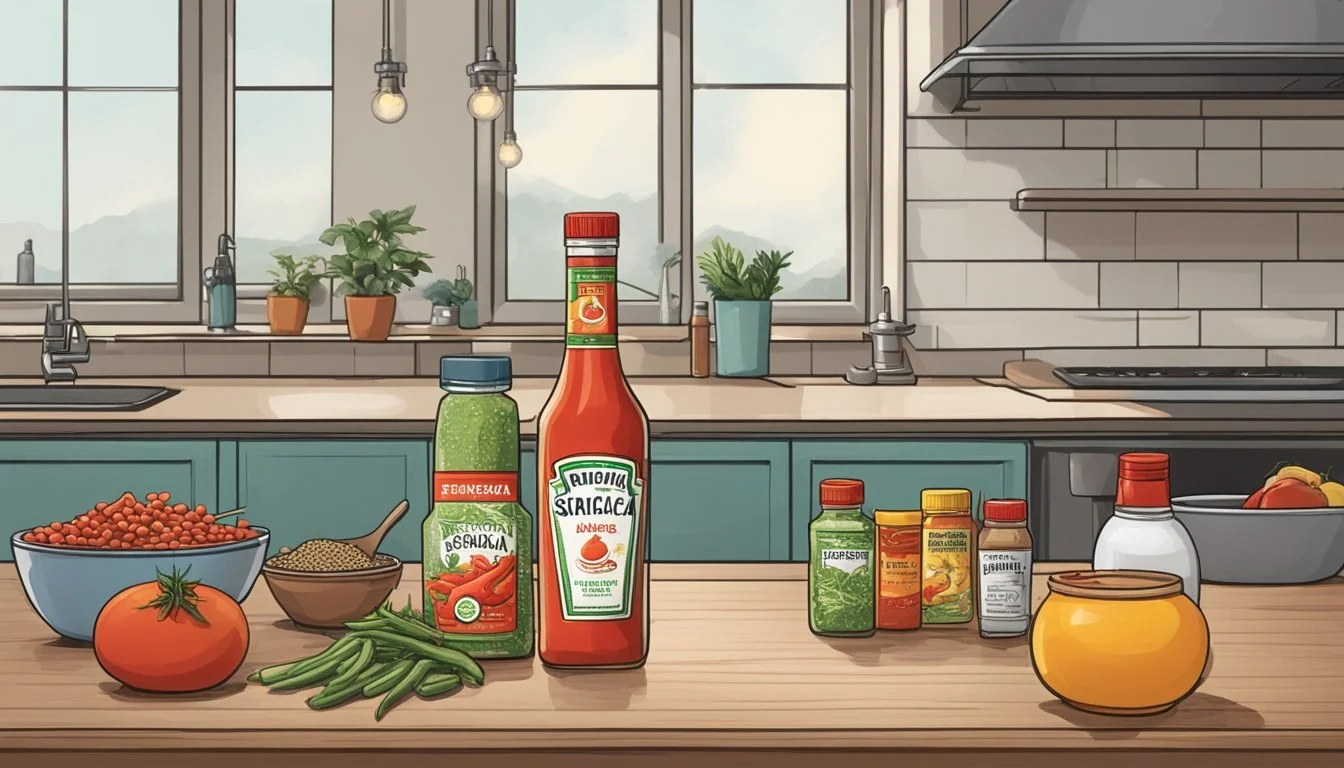How Long Does Sriracha Sauce Last?
Shelf Life and Storage Tips
Sriracha sauce (how long does sriracha sauce last?), a type of hot sauce originating from Thailand, has become a staple condiment in many kitchens worldwide. Its unique blend of chili peppers, garlic, sugar, salt, and vinegar not only contributes to its distinctive taste but also to its shelf life. These ingredients act as natural preservatives that help extend the longevity of the sauce.
An unopened bottle of sriracha can last up to a year past its expiration date when stored in a cool, dark place such as a pantry. Once opened, the sauce maintains its freshness for about six to nine months at room temperature. Refrigeration is not strictly necessary for sriracha, thanks to its acidic nature, but keeping an open bottle in the fridge can further preserve its quality and extend its shelf life to up to three years. It is important for consumers to recognize spoilage signs like off smell, mold, or unusual changes in texture to ensure the sauce is still good to use.
Composition of Sriracha Sauce
The distinct taste and shelf life of Sriracha sauce are determined by its unique blend of ingredients and preservatives. Understanding the components can provide insight into how the sauce maintains its quality over time.
Key Ingredients
Sriracha sauce owes its bold flavor profile and piquancy to several key ingredients. These typically include:
Chili Peppers: The primary source of heat, giving the sauce its characteristic spiciness.
Vinegar: Acts as a natural preservative and adds a sharp, tangy taste.
Garlic: Provides a robust aroma and flavor depth.
Sugar: Balances the heat of the chili peppers with a subtle sweetness.
Salt: Enhances the overall taste and also contributes to the sauce's preservation.
These ingredients are combined in precise proportions to create the spicy, tangy, slightly sweet, and garlicky sauce that many enjoy.
Role of Preservatives
While the ingredients themselves possess natural preservative qualities, Sriracha sauce often contains additional preservatives which aid in extending its shelf life. The acetic acid in vinegar and the capsaicin in chili peppers play significant roles in safeguarding the sauce against spoilage. Furthermore, commercial Sriracha preparations might include:
Sodium Bisulfite: Used to maintain freshness and inhibit the growth of bacteria and fungi.
Potassium Sorbate: Ensures the sauce's longevity by preventing mold and yeast development.
These preservatives allow the sauce to retain its quality for longer periods, especially after opening, provided that proper storage conditions are maintained.
Optimal Storage Conditions
To ensure the longevity of sriracha sauce, specific storage conditions must be observed both before and after the product is opened. These conditions help to maintain the sauce’s quality by preventing degradation due to environmental factors.
Before Opening
When unopened, sriracha sauce should be kept in a cool and dry place such as a pantry. A stable temperature away from heat sources and out of direct sunlight is ideal. These conditions prevent premature deterioration of the sauce.
Pantry: Best location for unopened sriracha.
Temperature: Should be consistent and cool.
Avoid: Direct sunlight, heat sources, including appliances.
After Opening
Once opened, sriracha's exposure to air and moisture should be minimized. Consequently, it is advisable to store the sauce in the fridge to preserve its quality. Keeping the sauce in its original container, tightly sealed, is essential.
Refrigeration: Store in the fridge at a consistent temperature.
Container: Always reseal the original packaging.
Room Temperature: If not refrigerated, store in a cool, dry place away from direct sunlight.
Shelf Life and Freshness
Evaluating the longevity of Sriracha sauce hinges on whether the bottle is unopened or opened. Each state offers a specific lifespan, affected by factors such as storage condition and whether the product is past its best by date.
Unopened Bottles
Unopened Sriracha sauce remains shelf-stable and can last well beyond its printed expiration. Specifically, unopened bottles can maintain quality for up to two years past this date if stored in proper conditions — cool, dry, and away from direct sunlight. It is essential that these bottles are kept in a consistent environment to preserve their freshness.
Opened Bottles
Once opened, the shelf life of Sriracha decreases. Opened bottles of Sriracha can last six to nine months in the pantry. Refrigeration extends their lifespan further, potentially preserving the sauce for up to two years. The key to maintaining an opened bottle's freshness is ensuring it is tightly sealed after each use to prevent exposure to air, which can hasten degradation.
Indicators of Spoilage
When assessing Sriracha sauce for spoilage, one should be attentive to changes in visual appearance, texture and consistency, and taste and odor, as these can all be telling signs that the sauce may no longer be at its best quality.
Visual Clues
One should examine the sauce carefully for any discoloration or presence of mold. Sriracha is typically a bright red color, and any significant deviations could indicate spoilage. Mold, which may appear as fuzzy spots of white or green, is a definitive sign that the sauce should not be consumed.
Texture and Consistency
The texture of Sriracha should be smooth with a consistent flow. Any change in texture, such as separation or the development of lumps, can signify a loss of freshness. A sauce that has fermented may show signs of bubbling or may have become more liquid than its original consistency.
Taste and Odor
Fresh Sriracha has a spicy, slightly garlicky taste with the acidity of distilled vinegar. If the sauce has an unusual taste or a foul odor, it's advisable not to consume it. A fermented smell, different from the tangy vinegar scent, can also indicate spoilage. An odor that is markedly off from the spicy and pungent aroma one expects from Sriracha should be treated as a spoilage sign.
Health and Safety Considerations
When enjoying Sriracha sauce, an individual's health and safety are paramount considerations. The risk of food poisoning arises when bacteria grow to unsafe levels. Thus, observing proper hygiene when handling Sriracha sauce is essential, such as using clean utensils and not allowing the sauce to come into contact with unclean surfaces.
Here are key points to consider:
Safety & Hygiene: One should always ensure the cap is sealed properly after use to prevent contamination. It's crucial to store the sauce according to manufacturer guidelines to mitigate the growth of bacteria.
Shelf Stability: Thanks to its ingredients like vinegar and chili, Sriracha inherently resists spoilage. However, spoilage can still occur, especially when storage guidelines are not followed.
Condition Expected Shelf Life Unopened Up to 2 years past expiry Opened, room temp 6 months to a year Refrigerated 1.5 to 2 years after opening
Contamination Signs: For safety, if the sauce shows signs of mold, has an off smell, or the texture has changed, it should be discarded.
The maintenance of food safety standards is crucial to avoid health risks. It is recommended to consume Sriracha sauce while it's within its optimal shelf life and to exercise caution if there are signs of spoilage.
Usage and Culinary Practices
Sriracha sauce is a versatile hot sauce that enhances a variety of dishes with its unique blend of chili heat and garlic.
Culinary Applications
In the culinary world, Sriracha is frequently used as both a condiment and an ingredient. Its applications span across multiple cuisines from Asian to American. Chefs incorporate Sriracha into marinades and glazes to introduce a spicy kick to meats and vegetables. Its presence is notable in recipes like Sriracha mayo, which adds a vibrant twist to traditional mayonnaise. Homemade Sriracha recipes also allow for customization, enabling individuals to adjust the level of heat to their preference.
Marinades and Glazes: Adds heat and depth of flavor to proteins and vegetables.
Sriracha Mayo: A popular condiment combining the spicy sauce with mayonnaise for sandwiches and burgers.
Homemade Sriracha: Allows control over spice levels and ingredients for a personalized touch.
Pairing with Foods
Sriracha's assertive flavor makes it an excellent pairing with a wide range of foods. It's commonly drizzled over eggs for a piquant breakfast choice or swirled into soups to add complexity. Its compatibility with street food is undeniable, as it regularly appears atop pizza slices and complements the savory profile of burgers. As a dipping sauce, Sriracha brings an exhilarating heat to snacks and appetizers.
Eggs: Enhances breakfast dishes with a zesty flair.
Pizza and Burgers: Complements and elevates the flavors of these quintessential fast foods.
Substitutes and Variations
While Sriracha's unique taste is widely sought after, other spicy sauces like Tabasco Sriracha offer alternative flavor profiles. Sambal Oelek stands as a chunkier, more concentrated chili paste, delivering a different texture and form of heat. For those who shy away from spice, milder hot sauce options can be used, though they may not replicate the distinct taste of Sriracha. Variations such as Sriracha-based barbecue sauces or spicy ketchups also exist for more conservative palates.
Sambal Oelek: A less processed, chunkier chili paste for those seeking a different kind of heat.
Tabasco Sriracha: An alternate spicy sauce with a slightly different flavor profile.
Milder Alternatives: Provide a less intense heat for sensitive palates while still imbuing a similar flavor.
Maintenance and Care of Sriracha
Proper storage and care are crucial for extending the life of Sriracha sauce. Factors such as temperature control and container integrity play a pivotal role in maintaining its flavor and quality.
Long-Term Preservation
To ensure long-term preservation, refrigerating Sriracha sauce is advisable. Refrigeration can extend its shelf life to up to two years after opening. When refrigerating, it's important to use an air-tight container to prevent the sauce from absorbing other odors and to maintain its original flavor profile. Freezing is not recommended, as it can alter the sauce's consistency and taste due to the natural fermentation process inherent in Sriracha.
Ideal Refrigeration Practices:
Condition Expected Shelf Life Unopened, at room temp Up to 9 months past best by date Opened, refrigerated Up to 2 years Opened, at room temp 6 months to 1 year
Handling and Exposure
When handling Sriracha, one should avoid direct sunlight and sources of heat as these conditions can degrade the sauce's quality. If the bottle appears damaged or the seal is broken, it's best to conduct a taste test before use. A compromised container can lead to spoilage despite the presence of natural preservatives, like vinegar, that typically protect against bacteria and prolong shelf life. Always ensure the lid is sealed tightly after each use to prevent the introduction of contaminants that could initiate the fermentation process prematurely.
Key Points to Remember:
Keep Sriracha away from heat and light.
Always seal the bottle tightly post-use.
Discard if the packaging is compromised.
Perform a taste test if the sauce's appearance changes.
Common Questions and Misconceptions
When it comes to sriracha sauce, there are several areas where misconceptions arise, particularly concerning its storage, shelf life, and changes over time. This section aims to clarify these points with specific information.
Refrigeration Myths
One of the most prevalent questions is should sriracha be refrigerated? Contrary to some beliefs, sriracha does benefit from refrigeration. While Huy Fong Foods, the manufacturer, states that sriracha is shelf-stable due to its vinegar content and preservatives, keeping it in the fridge can extend its quality lifespan. It’s important to note that refrigeration is not about preventing spoilage, but rather about maintaining the sauce’s optimal flavor and consistency for a longer period.
Expiration Dates
Many are unsure about how strictly they should adhere to the expiration dates on sriracha bottles. Although the sauce can technically be fine up to nine months after the "best before" date, a reasonable timeframe for consuming sriracha when stored at room temperature is recommended for the best quality experience. Post-expiration, one might notice the sauce separating or changes in color, but this does not immediately indicate that the sauce has gone bad. These are natural occurrences due to the ingredients settling.
Flavor and Heat Changes
The capsaicin in sriracha that provides its heat doesn't diminish quickly over time, but the flavor profile can slightly change. It is a misconception that the sauce loses its spiciness; however, some consumers may note a difference in taste as it ages, especially if stored outside a kitchen cabinet and exposed to varying temperatures. Color changes to a darker hue can also occur, which is a normal reaction to oxidation and does not necessarily mean the sauce is spoiled.
Additional Tips and Tricks
When it comes to preserving the quality of Sriracha sauce, one must pay attention to signs of spoilage, possible substitutes, and methods to maintain its consistency and texture.
Signs of Spoilage:
Molds: Visible mold growth is a clear indication that Sriracha sauce has gone bad. If mold appears, discard the sauce immediately.
Odors: An off-smelling Sriracha is a sign of contamination. A fresh bottle should have a spicy, sharp scent.
Texture Changes: Any noticeable changes in consistency from smooth to chunky should raise an alarm.
To reduce the chances of spoilage:
Keep the cap clean to avoid mold and odors. Wiping the cap after every use can prevent crust formation and potential bacterial growth.
Substitutes:
If one runs out of Sriracha or discovers their bottle has spoiled, they can consider the following substitutes that impart a similar spicy flavor:
Substitute Ratio Hot Chili Sauce 1:1 Chili Garlic Sauce 1:1 (plus garlic) Cayenne Pepper Mix To taste
Maintaining Quality:
Always store Sriracha in a cool, dry place, and consider refrigeration to extend its shelf life.
Make sure the bottle's tip is free from sauce residue, which maintains consistency and prevents contamination.
By following these tips and tricks, one can ensure their Sriracha sauce remains in the best possible condition for use.

